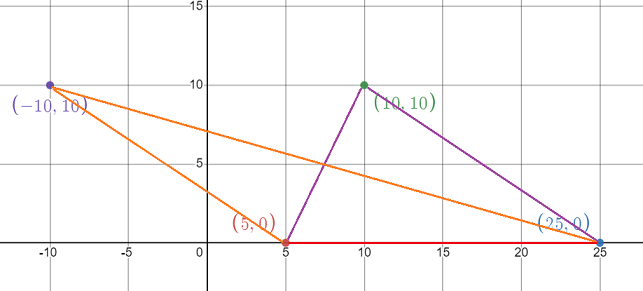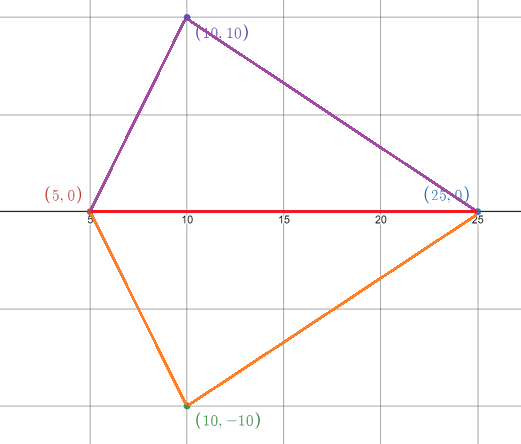Events & Promotions
|
|

GMAT Club Daily Prep
Thank you for using the timer - this advanced tool can estimate your performance and suggest more practice questions. We have subscribed you to Daily Prep Questions via email.
Customized
for You
Track
Your Progress
Practice
Pays
Not interested in getting valuable practice questions and articles delivered to your email? No problem, unsubscribe here.
- Nov 20
07:30 AM PST
-08:30 AM PST
Learn what truly sets the UC Riverside MBA apart and how it helps in your professional growth - Nov 20
01:30 PM EST
-02:30 PM IST
Learn how Kamakshi achieved a GMAT 675 with an impressive 96th %ile in Data Insights. Discover the unique methods and exam strategies that helped her excel in DI along with other sections for a balanced and high score. - Nov 19
12:30 PM EST
-01:30 PM EST
Learn how Keshav, a Chartered Accountant, scored an impressive 705 on GMAT in just 30 days with GMATWhiz's expert guidance. In this video, he shares preparation tips and strategies that worked for him, including the mock, time management, and more - Nov 22
11:00 AM IST
-01:00 PM IST
Do RC/MSR passages scare you? e-GMAT is conducting a masterclass to help you learn – Learn effective reading strategies Tackle difficult RC & MSR with confidence Excel in timed test environment - Nov 23
11:00 AM IST
-01:00 PM IST
Attend this free GMAT Algebra Webinar and learn how to master the most challenging Inequalities and Absolute Value problems with ease. - Nov 24
07:00 PM PST
-08:00 PM PST
Full-length FE mock with insightful analytics, weakness diagnosis, and video explanations! - Nov 25
10:00 AM EST
-11:00 AM EST
Prefer video-based learning? The Target Test Prep OnDemand course is a one-of-a-kind video masterclass featuring 400 hours of lecture-style teaching by Scott Woodbury-Stewart, founder of Target Test Prep and one of the most accomplished GMAT instructors.
D
Be sure to select an answer first to save it in the Error Log before revealing the correct answer (OA)!
Difficulty:
 25%
(medium)
25%
(medium)
Question Stats:
73% (01:31) correct 27%
(01:31)
wrong
27%
(01:31)
wrong  based on 358
sessions
based on 358
sessions
History
Date
Time
Result
Not Attempted Yet
If vertices of a triangle are A (5, 0), B (x, y) and C (25, 0), what is the area of the triangle?
(1) \(|x| = y = 10\)
(2) \(x = |y| = 10\)

(1) \(|x| = y = 10\)
(2) \(x = |y| = 10\)
Experience GMAT Club Test Questions
Yes, you've landed on a GMAT Club Tests question
Craving more? Unlock our full suite of GMAT Club Tests here
Want to experience more? Get a taste of our tests with our free trial today
Rise to the challenge with GMAT Club Tests. Happy practicing!

Kudos
Bookmarks
i was so sure it was D until i saw the answer sheet... made me doubt myself there...
then i had to google: area of triangle, and stumbled upon this:
https://www.mathopenref.com/trianglearea.html
doesn't matter what the x coordinate is... as long as your base is fixed, and your height is fixed, area should be the same... but i still have to see it (and drag the coordinates around -- see link above) myself to believe it!!
then i had to google: area of triangle, and stumbled upon this:
https://www.mathopenref.com/trianglearea.html
doesn't matter what the x coordinate is... as long as your base is fixed, and your height is fixed, area should be the same... but i still have to see it (and drag the coordinates around -- see link above) myself to believe it!!
Kudos
Bookmarks
I agree that the answer is D as well. I spent a lot of time trying to figure this one out.
In short if you assume that two points at (5,0) and (25,0) are the base (which equals 20), you still get the same area regardless of whether the third point is at:
(10,10)
(-10,10)
(10,-10)
(-10,-10)
All that matters is that the height is still 10, because the area of a triange is 1/2*base*height: 1/2*10*20 = 100
In short if you assume that two points at (5,0) and (25,0) are the base (which equals 20), you still get the same area regardless of whether the third point is at:
(10,10)
(-10,10)
(10,-10)
(-10,-10)
All that matters is that the height is still 10, because the area of a triange is 1/2*base*height: 1/2*10*20 = 100
















